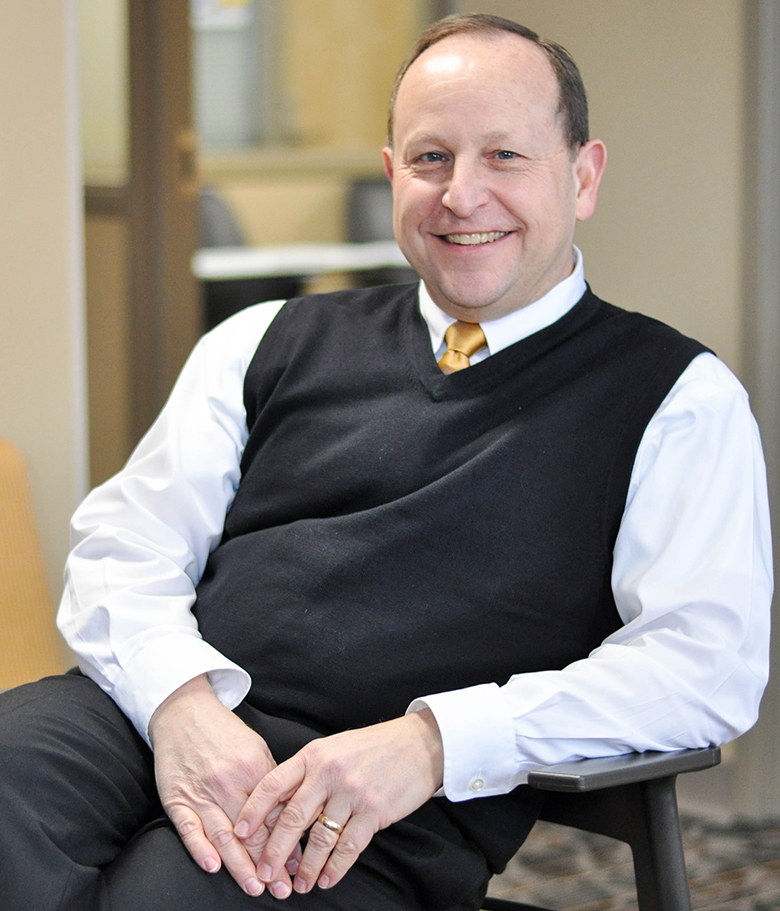Mat Sutton, Ph.D., is an associate professor in the Department of Technology Leadership and Innovation. He received the 2015 Dwyer Award for Undergraduate Teaching in the Purdue Polytechnic Institute. Students select the award winners.
---
My teaching style
 Clearly, professors have to set the stage in the classroom. I want students to feel welcome in class. To that end I try to establish an environment that allows them the freedom to ask questions and for learning to take place. I provide structure for the learning environment; it’s very purposefully organized. I like to demonstrate good form and point out common mistakes, then let them go off and practice on their own. I see myself as one who facilitates opportunities for students to make connections. Ultimately, the student has to make the meaning for themselves for it to resonate and take hold.
Clearly, professors have to set the stage in the classroom. I want students to feel welcome in class. To that end I try to establish an environment that allows them the freedom to ask questions and for learning to take place. I provide structure for the learning environment; it’s very purposefully organized. I like to demonstrate good form and point out common mistakes, then let them go off and practice on their own. I see myself as one who facilitates opportunities for students to make connections. Ultimately, the student has to make the meaning for themselves for it to resonate and take hold.
My teaching philosophy
The crux of learning has to be inside the students. They hold the primary responsibility for learning, no question. But as a professor, I see my teaching philosophy revolving around three components: adjusting my role as needed, being real, and being prepared. I don’t see myself as a pusher of information all the time. Sometimes I need to provide guided practice and allow them to interact with the material, and I need to know when to transition from role to role. I also try to show a more human side. I want to build a relationship with the students. We laugh together. On the first day of class, I don’t cover any content. I use that time to set the stage, explaining expectations, and to get to know students. Finally, I organize the content to match the learning outcomes, trying to accommodate a variety of learning styles. One aspect of preparation is providing immediate or timely feedback, which helps students learn and helps me clear up misunderstandings quicker. I don’t want that to be a barrier.
Constantly learning
When I started at Purdue, email was the big thing. The Internet was just starting. Technology has grown by leaps and bounds, and I’ve tried to stay current. When I see a technology that I can purposely integrate into my class, I will take a closer look at it. I avoid using technology just for the sake of using it. I want it to enhance the learning process, not be a distraction. To facilitate questioning, I use i>clickers in class to let students wrestle with a question. They provide immediate feedback and students can see what the rest of the class is thinking. I also learn from other experts. Eric Mazur, a Harvard physics professor, gave a talk at Purdue last year. He demonstrated a meaningful questioning technique that I later used in one of my classes. I got virtually identical results in a completely different academic discipline. When I left class that day, it was a really neat confirmation. One student told me “it really helped to discuss my thoughts with somebody else,” which is part of the learning process. So I’ve been purposefully looking for other places where I can use it. There’s cool, authentic learning going on.
Why teach?
I just love my job. It’s fun being with students and interacting with them. I very much enjoy being in the classroom. What I like about teaching in the Polytechnic is the applied nature of what we’re doing. We use our knowledge to benefit industry and society. It’s taking the theoretical and making it real. It’s what’s unique about the Polytechnic, and we have employers who recognize that . . . and want to hire our students.
